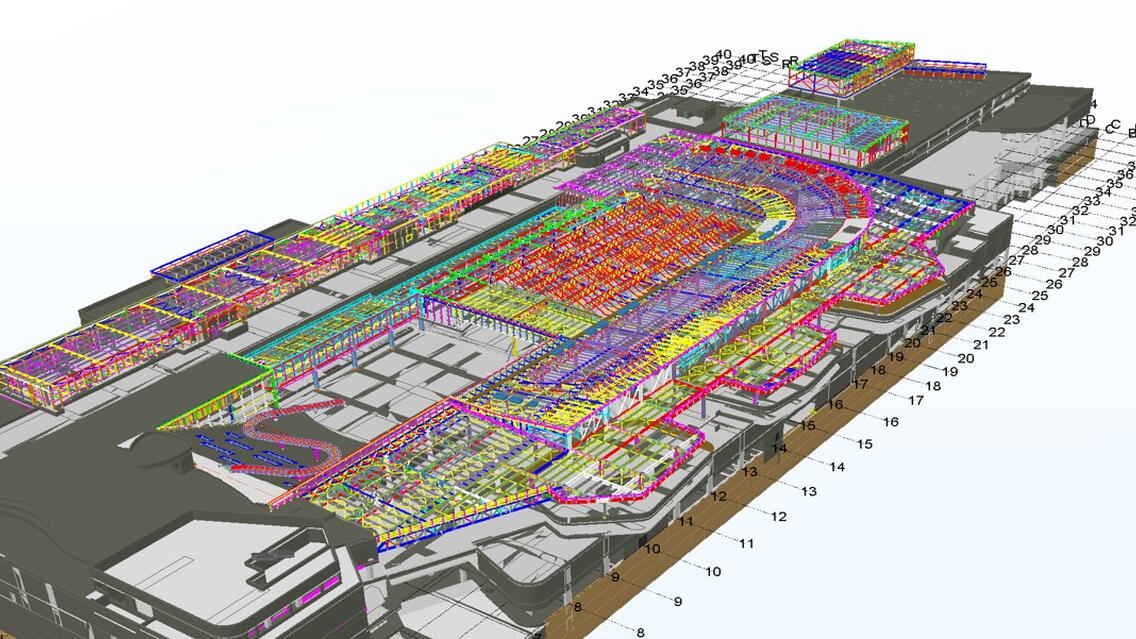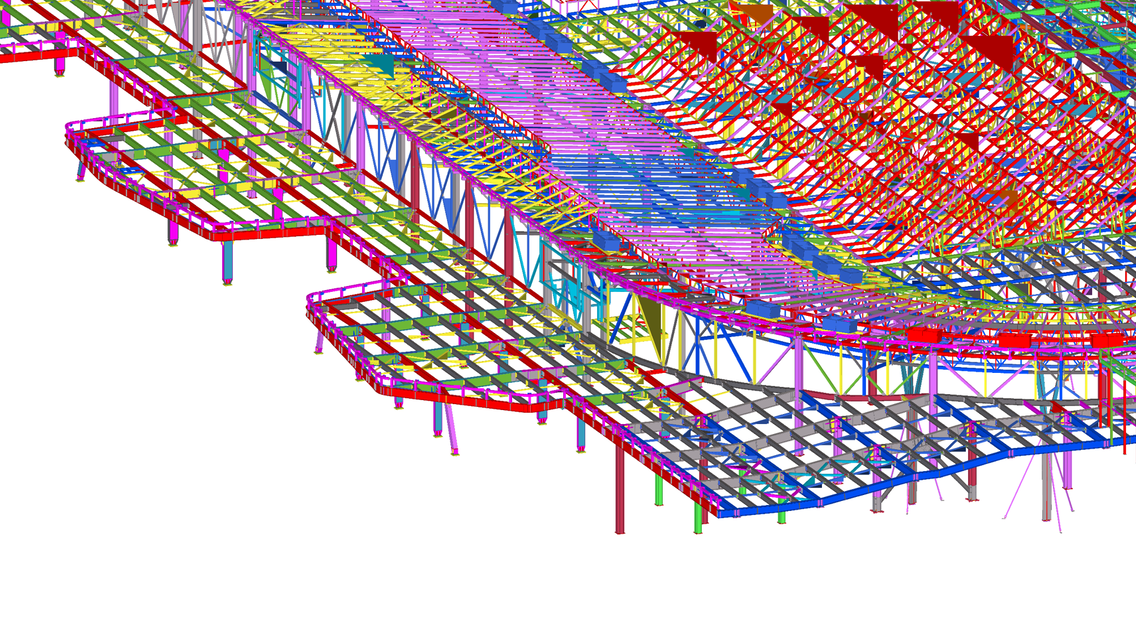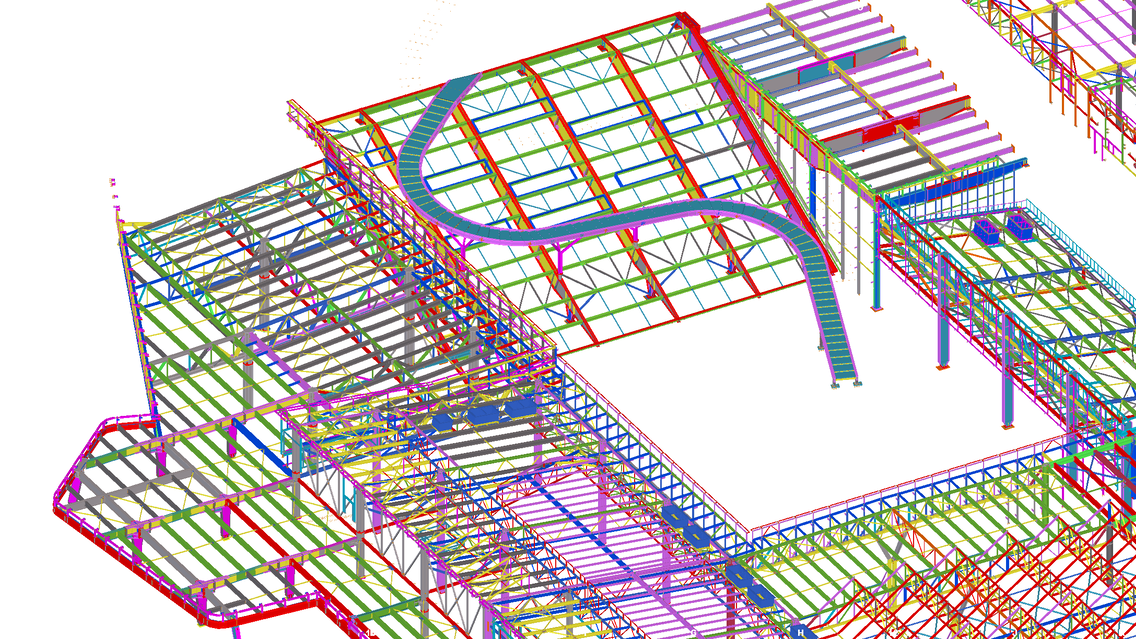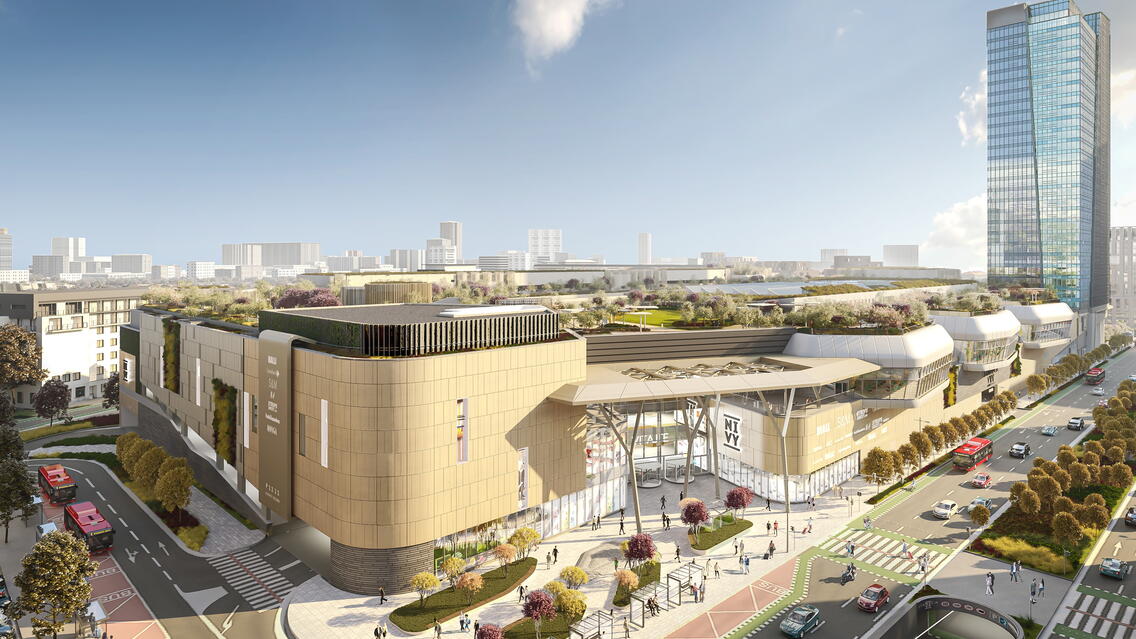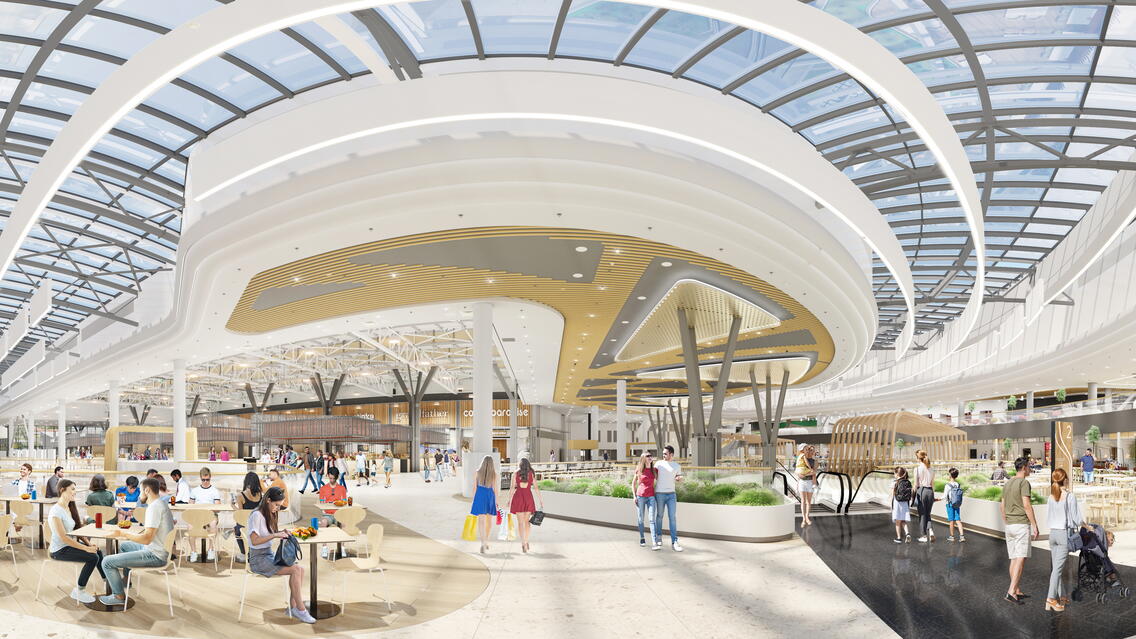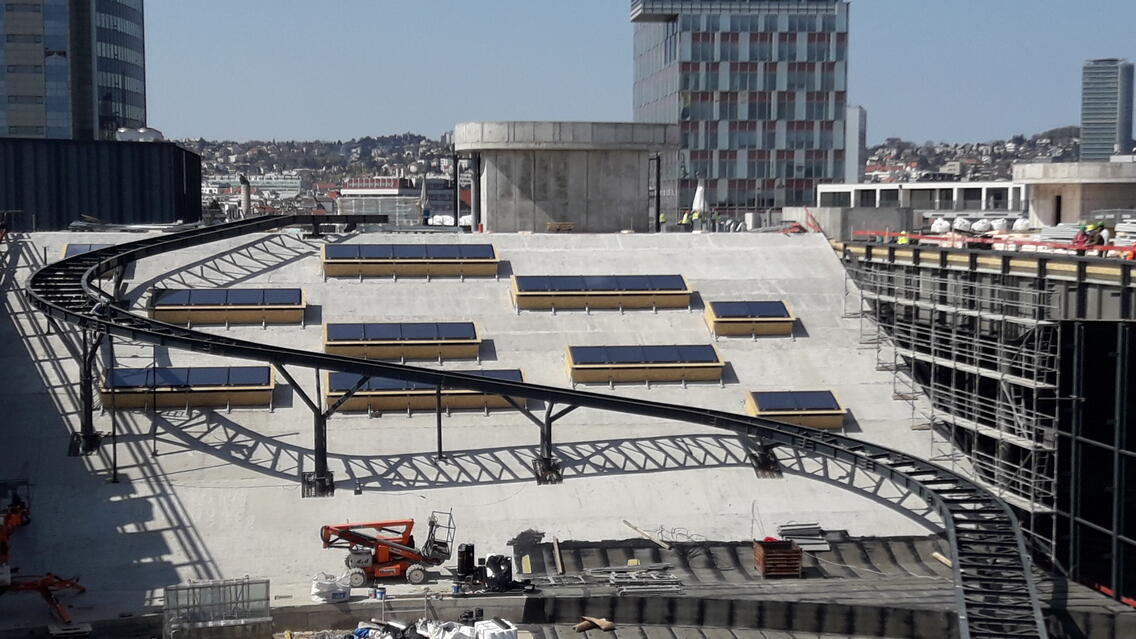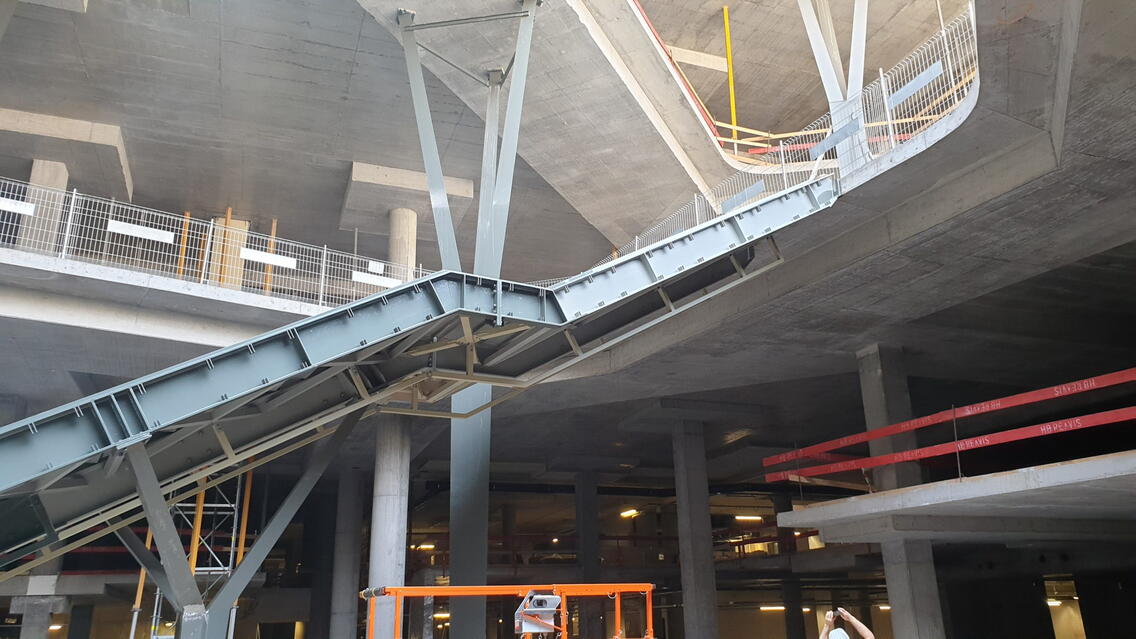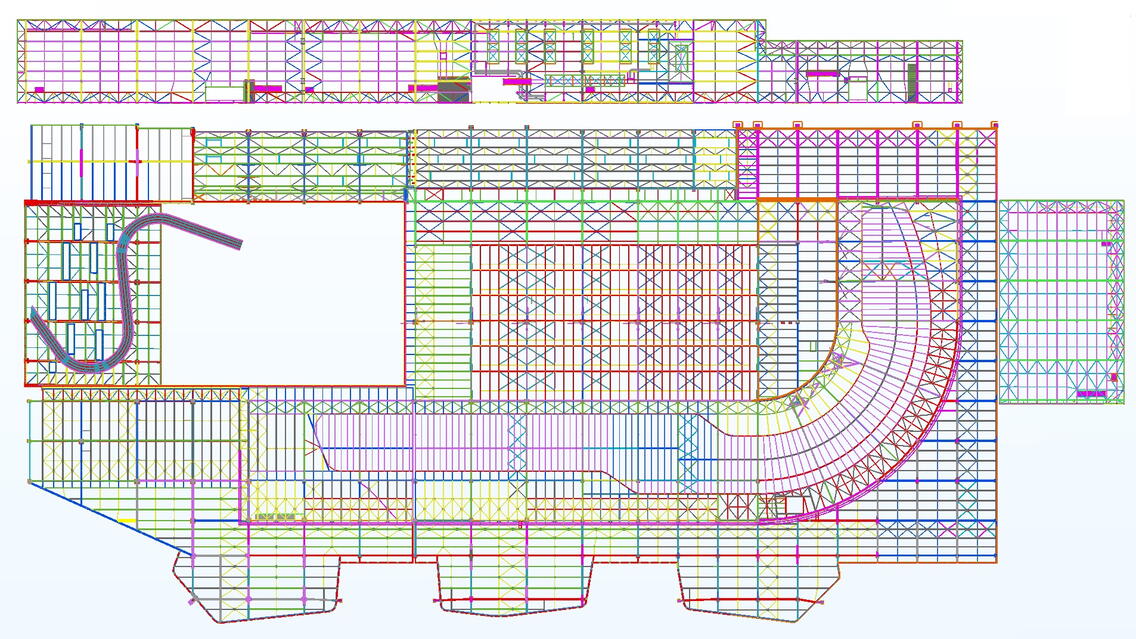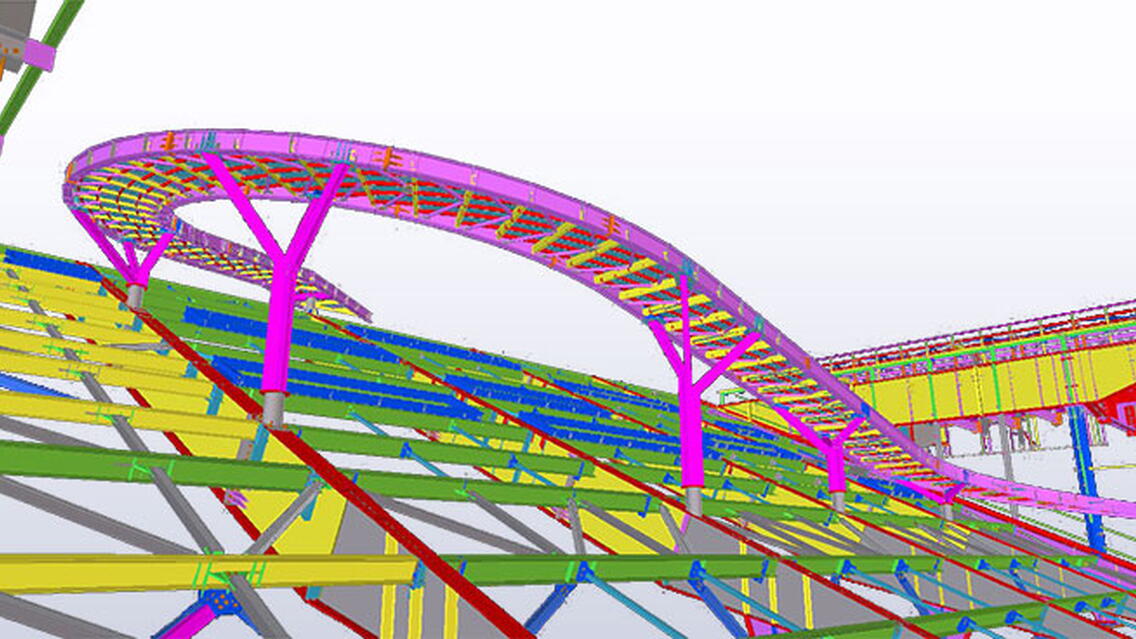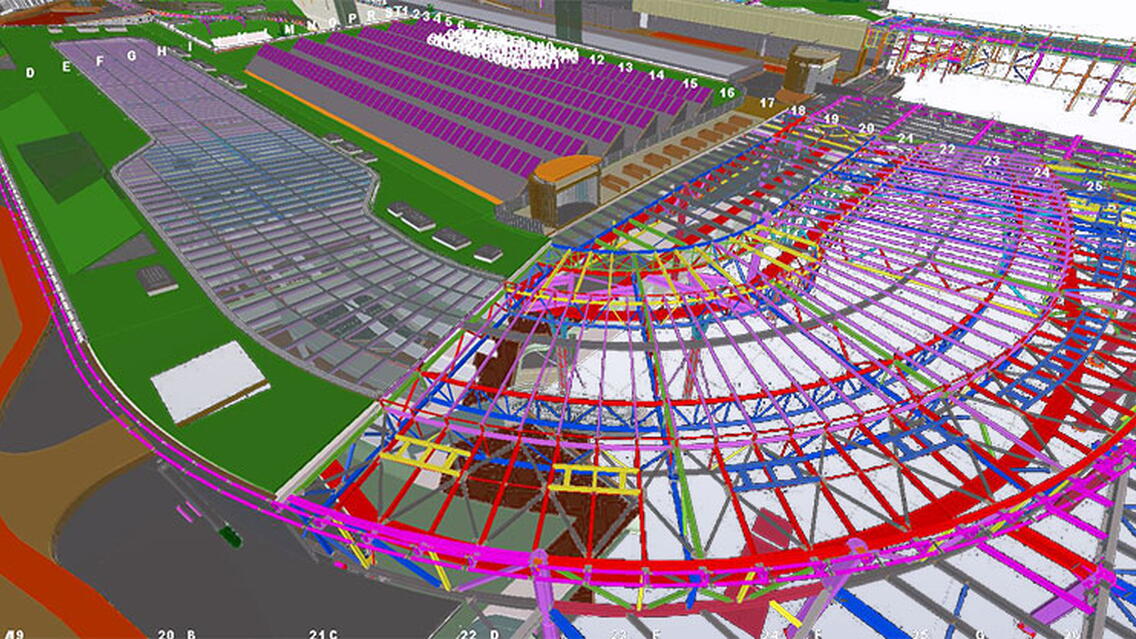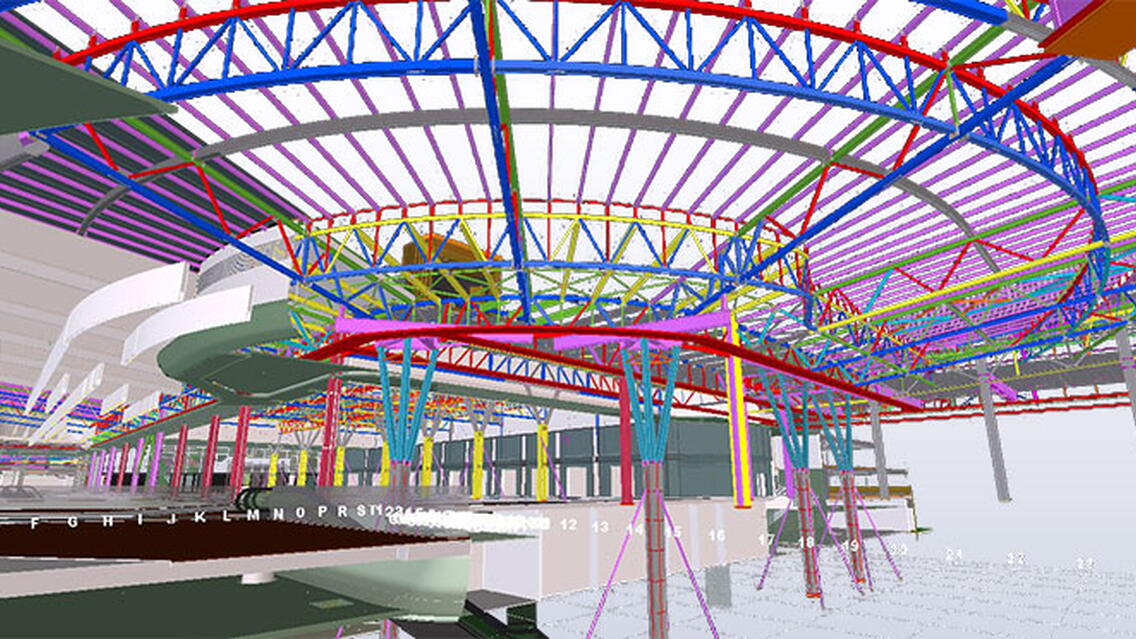International bus station in connection with a modern market, office space and park
An international bus station in connection with a modern market, office space, and park for the general community is one of the largest and timeless buildings in Central Europe today.
• SHOPS – 70,000 m2
• OFFICES – 30,000 m2
• MARKET – 3,000 m2
• BUS STATION – 30,000 m2
• 55,000 EXPECTED DAILY VISITORS
• 2,150 PARKING SPACES
• 20,000 PASSENGERS DAILY FROM MORE THAN 760 PLACES IN SLOVAKIA AND ABROAD
All of that at the heart of a vibrant business zone at the border of a historic city center. It combines several important functions into a comprehensive concept that combines a transport hub, traditional and modern retail trends with entertainment, lifestyle, and a groundbreaking concept connecting the market with a green roof.
Green Roof
The ’cherry on the cake’ is the Green Roof with community gardens, an apiary and complete equipment for active recreation and sports. The green roof of Nivy Station is a new platform for the community life of the inhabitants of the district with nooks for family picnics, but also a perfect lunch shelter for employees from the adjacent business district. Not every shop has such a roof with a park on the top.
The company HESCON sro, together with the general contractor NORDEC, had the honor to transform the architectural solution of the London company Benoy and the general designer The Siebert Talaš Studio into the executive design stage and production documentation of steel structures of the Green Roof described above.
It consists of a park, running track, outdoor workout center and many family attractions.
Project
It was about 3000 tons of steel structures, consisting of the main roof with a skylight in the upper part passing into the lower green roofs on which were used composite steel-concrete elements, roofing of the market, roofing of ramps, hall structures of engine rooms, footbridges, large-span roofing, stairs and bus washrooms. Due to the scope and time-consumption of the project, the use of the Multi-user system meant that many designers worked on the project simultaneously.
Within the project phase, a wide range of static-structural solutions were used, from classic rolled cross-sections, to open, closed, and cross-welded profiles of rolled cross-sections, bent elements, bent, and arched trusses, coupled ceilings and many other interesting solutions and exposed details. These included elastomer bearings, so that the static action of the individual elements of the structure is perfectly captured.
The most interesting construction elements include tree pillars, a spiral footbridge and the main staircase.
Why Tekla?
Tekla Structures software was an ideal tool for creating an executive design project of load-bearing steel structures, and subsequently production and assembly documentation. Last but not least, the use of assembly itself practically ensured the accurate and timely implementation of the structure even in such technically demanding and time pressured conditions. Given the schedule of construction, supply, and installation of technology, the Tekla Structures software was the only way to ensure that the client met the contractual deadlines.
Challenges
The challenges included the size of the model and the number of project data references that had to be worked on. Thanks to this method, we were able to incorporate all the client’s requirements, individual professions and technology suppliers, as well as the requirements of the investor in a relatively short time without any impact on the works.
As part of the coordination between the architect and the designer of steel and concrete structures, constant exchange of data in the .ifc format was used, so that the individual units fitted together perfectly and created one functional unit. For this, Tekla Structures software is the ideal tool. It enabled efficient work that ensured the delivery of the structure on time, despite technically demanding coordination pressure.
